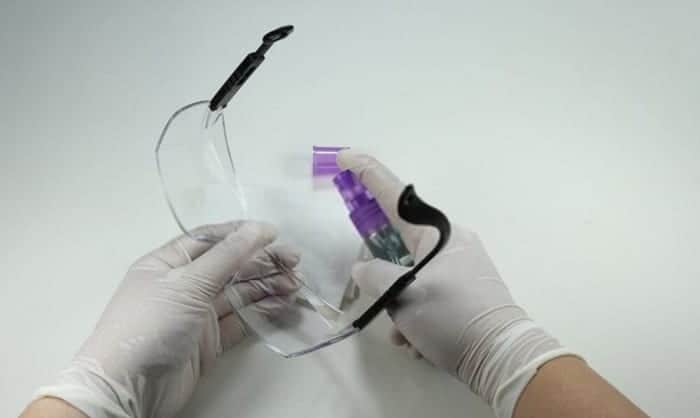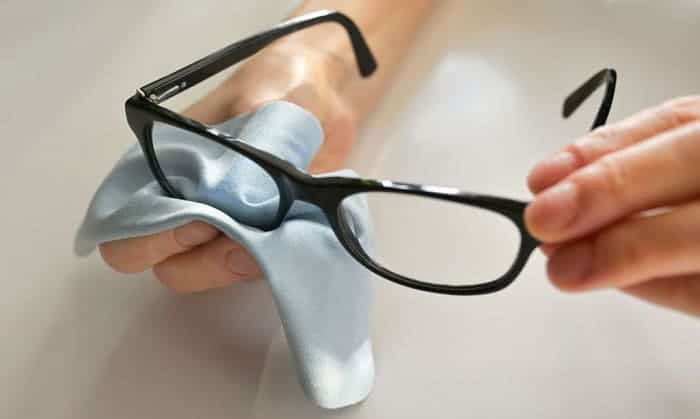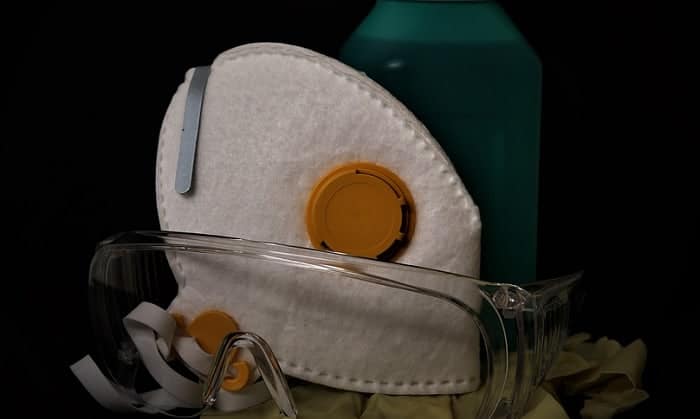Safety glasses are regularly exposed to hazardous materials; therefore, regular cleaning is necessary to maintain their quality and extend usability.
Eager to know how to clean safety glasses?
Read on to know what’s the best way to clean safety glasses and what things you need to avoid to not destroy your lens’s quality.
Table of Contents
What You Need
- Water
- Mild detergent or cleaning solution
- A soft brush
- Microfiber cloth/microfiber bag
- A storage case/pouch
6 Simple Steps to Clean Safety Glasses
Regular Basic Maintenance
Checking your safety glasses regularly protects your visual condition by ensuring that no sharp debris and other potential eye irritants are present on the interior lens of your safety glasses that may enter your eyes and cause discomfort.
Dirty lenses also minimize visual clarity, which can directly affect your productivity or worse, may cause accidents.
It is also necessary to regularly inspect your safety glasses for cracks, chips, dislodged frames, and scratches. You should take small cracks seriously as they can cause severe eye injury if the glass shatters while worn.
Moreover, safety glasses with elastic headband should be checked for elasticity and appropriate fit in the wearer’s head to ensure that they will remain in place while doing strenuous activities.
Headbands are likely soaked in sweat from a long day of work, which may lead to the loss of their natural elasticity. This causes the safety glasses to slip from the wearer’s head, and if it happens in the middle of an optically hazardous task, it may lead to irreversible injuries.
Blow Off Dust Particles and Micro Debris
You can lightly blow off dust particles, debris, and other contaminants from your safety glasses before wearing them to eliminate eye irritants. This can be done during break time, when thorough cleaning and maintenance inspection has been done before your shift started.
Rinse with Clean Lukewarm Water
To remove a great deal of dirt, dead skin, and debris lodged on the lenses and nooks of the frame, you can rinse it with lukewarm water. You can either submerge it or place it under running water. In case your tap water is not potable, you may use purified water stored at room temperature as a substitute.
You may use a mild detergent to clear off leftover contaminants and debris. Use your index finger in applying the detergent and do it in a gentle circular motion to avoid scratching the lens. You may also use a cleaning solution designed to clean lenses for optimum visual clarity.
Brush off Dirt and Debris
In cleaning dirt, leftover debris, and dust build-up that has managed to worm its way in between tight spaces, use a soft-bristled toothbrush and lightly brush that dirt away.
The water will soften the accumulated dirt in nooks and crannies; thus, minimal brushing will remove it easily from where it managed to settle. Apply minimal pressure when brushing to avoid scratching the lens or distorting the natural form of the frame.
Wipe The Glasses Dry with Microfiber Cloth
Once washing is done, let everything dry and use a microfiber cloth to wipe off water streaks and residue.
You may also use a microfiber bag in cleaning the lenses, but make sure to use the inside of the bag because the exterior side of the bag is exposed and may have collected contaminants.
Use a Secure Eyewear Case for Storage
Place your safety glasses in their designated glasses case that comes with them. You may put them inside a microfiber pouch first and then inside a glasses case with a hard exterior. Make sure to clean them first using the aforementioned steps before storing to prevent contaminating the inside surface of the microfiber bag.
You may also attach a retention cord or a neck cord so you can hang them easily on your neck when not in use. This also prevents you from misplacing your safety glasses.
Helpful Tips in Keeping Your Safety Glasses in the Best Condition
- The frame is as important as your lenses, so clean it regularly. Dirt, dead skin cells, leftover debris, accumulated oil, and dust tend to settle in between the contours of your glass frame.
- Just because the cloth feels soft to touch doesn’t mean it’s safe to use for cleaning safety glasses. Most cloth fabrics are infused with abrasive fibers that can leave scratch prints on your lenses. Mirrored lenses are more prone to scratches, so always use a clean microfiber cloth when wiping your lenses.
- Keep your microfiber bag and cleaning cloths clean by washing them regularly. It is also wise to invest in more microfiber bags and cleaning cloth so you always have a clean stash available when the need for cleaning arises.
- Always consider the law of friction when cleaning your glasses. Cleaning your glasses using a dry cloth alone, without water or a cleaning solution, increases the risk of scratching your glass lenses.
- Do not use any soap or window cleaners to clean your glass lens as these types of cleaners contain harsh chemicals that may remove the special coatings infused on your lenses to provide optimum clarity.
- In this time of the Covid-19 pandemic, disinfecting your safety glasses is necessary to prevent contracting and transmitting infection.
You can disinfect your safety glasses at home by diluting household bleach with water. Immerse your safety glasses into the disinfecting solution for at least 2 minutes and once done, rinse all the solution off with warm water.
Make sure to remove all the disinfecting residue with warm water to avoid the onset of discoloration, haze, film, or even damage to the frame and lens integrity. Let everything dry and use a microfiber cloth in removing excess water streaks.
- It only takes 3 days to form a routine. Apply the same rule in maintaining your safety glasses by creating a daily routine. You can make a daily schedule of cleaning your safety glasses before your shift starts instead of doing it when it’s too dirty.
Now that you know how to clean safety glasses, it’s time to do your part and start materializing your learning by doing it yourself.
Safety glasses may come with various features for various purposes, but they all share one trait — with proper care, your safety glasses will last for years and protect you on your career journey.

Having worked in the field of personal protective equipment for over two decades, Andrew Carnegie is a specialist in the field.
At EDC, he strives to improve performance efficiency and promote workplace safety for EDC’s readers and customers. He also researches the most up-to-date equipment that has earned relevant accreditation for use in a wide range of industries and specialties.




